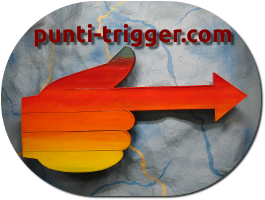After describing how to locate the Trigger Points in a methodical way, we can now examine the fundamental techniques of therapeutic Trigger Point massage.
Basically we use two techniques, namely ischemic compression and deep focused massage.
In ischemic compression, pressure is applied gradually and increasingly until the TP start yielding, and then a constant pressure is maintained for as long as the TP resists. After some time, the TP yields again, and then the cycle repeats.
In other words, an initial pressure is exerted on the TP, which initially will give in to the pressure. Once reached a certain depth, an opposition by the TP will be felt. At that point it will be necessary to maintain, but not increase, the pressure reached and simply wait. After a certain period of time of the order of minutes, you will feel by touch that the TP has began to give way again. Then the pressure can be increased once again, in order to achieve a deeper level of penetration, until the TP will resist again.
One can proceed to subsequent rounds of penetration making sure to stop when there is opposition. If one do not stop, not only unnecessary pain will be inflicted, but there can be tissu damage, the level of tension and stress of the patient will increase, and in some cases the condition will be aggravated rather than improved.
In any case, ischemic compression proceeds by direct pressure perpendicular to the treated surface.
In the case of deep massage in the strict sense however, a stretch action of the TP is effected by aplying a pressure in a rhythmic way through the PT in a predetermined direction, with the idea of stretching and lengthening the contracted sarcomeres.
It is better to move along the muscle fibers, but in some cases one can choose to move perpendicular to the fibers, eg in cases of muscle strain adjacent to where you want to stretch the muscle fiber, in order not to aggravate the tear itself by pulling it longitudinally .
Basically, the TP is located, and then pressure is applied to one side of the TP, then while maintaining the pressure one slides the tool (thumb, fingers, elbows, etc..) from one side of the PTP to the other, the idea being to stretch it.
Once reached the opposite side of the TP, the pressure is relieved and the tool is repositioned to the starting position. The action then repeats in cycles for no more than a minute for each TP.
A general consideration to make is maintaining a threshold of pain that is not extreme but not too low, meaning that while causing a lot of pain is not necessary and even counterproductive during the treatment of TP, at the same time a degree of pain is natural because it is pain intrinsic to the TP itself and should be seen as pain that leaves the TP, not as pain inflicted. The criterion to adopt is to maintain a pain threshold of 80-85% to achieve therapeutic results.
Another consideration is that of the relative merits of the two techniques mentioned above. It should be said immediately that the ischemic compression technique is rather heavy for the therapist's fingers, especially thumbs. Also it probably requires more strength as it acts perpendicular to the fibers with a perpendicular squeezing action , so overall a lot of effort is expended by the therapist who in the long run may incur permanent damage to joints in the fingers. The technique of deep massage is perhaps rather more efficient because it operates in a rhythmic manner and at a sharp angle and causes less waste of energy and less joint damage. In practice, it will be well to get acquainted with both techniques and consider them in terms of two tools to have in one's repertoire, giving preference to the massage technique but not disdaining to use the technique of compression, especially in some cases determined by anatomical considerations of various kinds.
Finally let's review the "toolbox" of TP manual therapy. The main consideration here is to exert maximum pressure with minimal effort and risk for the joints, while at the same time maintain the highest degree of sensitivity and accuracy.
Reinforced Thumb
The thumb is the sovereign instrument, but it also needs to be saved and protected to the highest degree. The joints of the phalanges of the thumb will undergo degeneration if you do not use standard precautions.
The first precaution is to not use your thumb unless it is absolutely necessary.
The second precaution is not to operate laterally but only frontally ie never apply pressure in a direction parallel to the axis of the joint but only in a direction perpendicular to the axis of the joint.
The third precaution is to reinforce the thumb with the help of the other fingers as shown in the image.
Finally, one can adopt the technique of combining the two reinforced thumbs of both hands back to back in cases where it is necessary to apply maximum pressure.
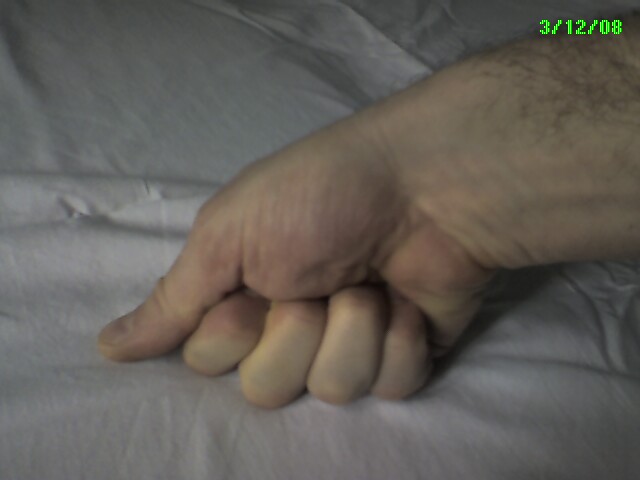
Phalanges
By bending the index finger, one can use the distal articular surface of the first phalanx. This technique allows to apply great concentratedvpressure but requires practice to become accurate and sensitive. Yet, this technique is still very good because it offers great protection against joint damage.
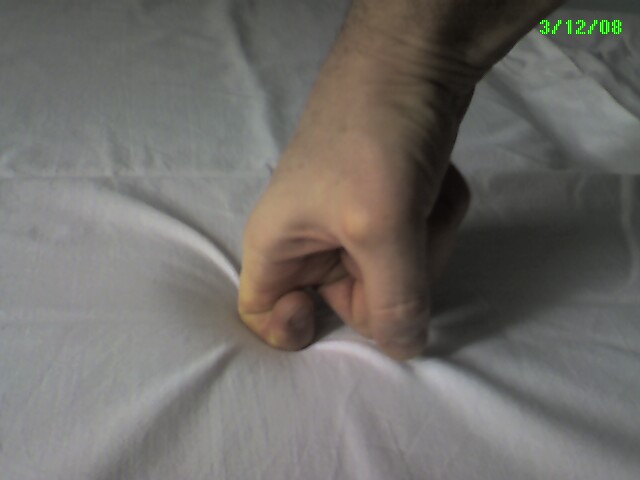
Similarly, one can use the first phalanges of the index and middle fingers, in particular to operate along the paraspinal muscles parallel to the spine. Even in this case one should practice consistently before feeling comfortable with this technique.
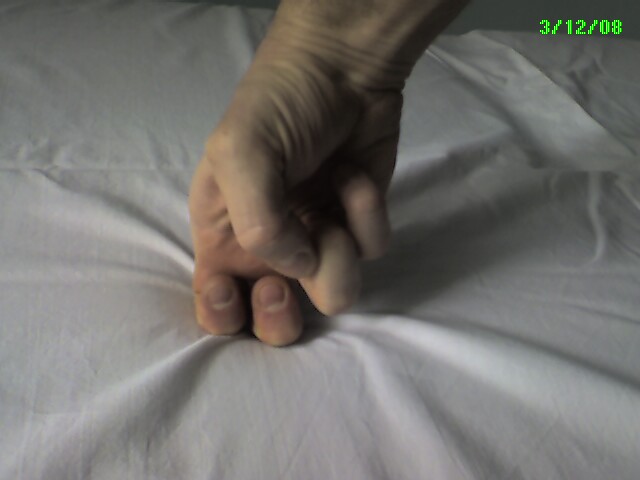
Reinforced Index
For detail operations, for example for TPs in the Masseter or the muscles of the neck, one can adopt this technique which allows to be very precise, although not to apply enormous pressure. Notice how once again the concept of reinforcing the joint is applied to avoid damage to the hands.
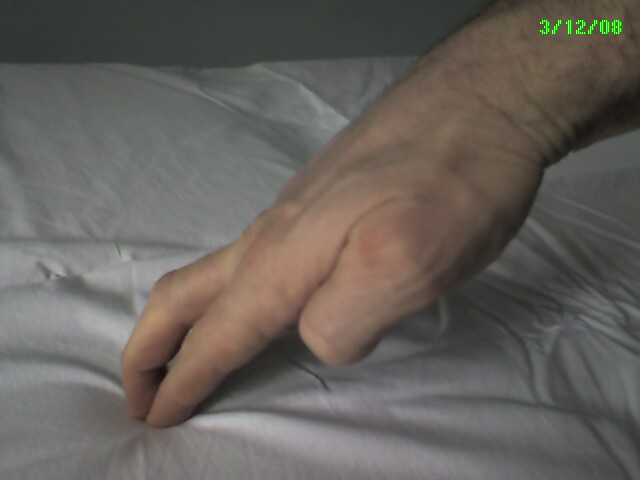
Reinforced Hand
Sometimes it is necessary to apply pressure over a larger area in the case of flat muscles such as those of the chest or the Biceps Femoris and then one can use the straight hand technique taking care to strengthen it with the fingers of the opposite hand. In the image the supporting hand is positioned too high for reasons of visibility, but in practice the supporting hand should be closer to the fingertips of the operatng hand in order to achieve maximum protection.
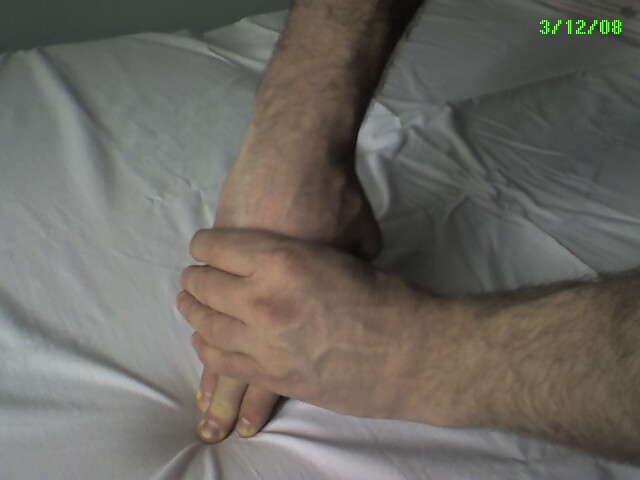
Reinforced Knuckles
There are cases where you'll have to pull out the heavy artillery, as for example when you are treating TPs in the Rhomboids of a 300-pound bodybuilder. Then you can resort to the technique of reinforced knuckles. The first two knuckles of the fist are placedon the TP, palm up with fingers closed. Then the operating hand is grabbed with the other hand, which will apply pressure and act as your guide. In extreme cases one can even apply extra pressure by leaning with one's chest on the back of the guiding hand ... to be used only if you know what you are doing!
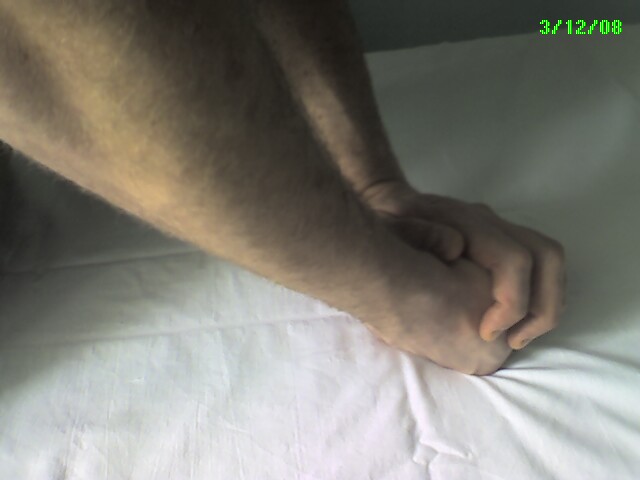
Elbow
The elbow may fall under the heavy artillery category as well, but after much practice once the therapist has developed adequate sensitivity, the elbow can also be quite accurate. The main criterion in using the elbow is actually the extension of the surface of the treated muscle. Evidently one will not use the elbow when treating small and thin muscles, while in other cases such as the Gluteus Maximus, using the elbow is almost a must. The caveat to keep in mind is the need to practice for a long time before the therapist can use the elbow safely. In particular, be careful not to slip because you risk hitting bone or delicate parts of the patient. It is necessary to start using your other hand as a guide to avoid accidents.
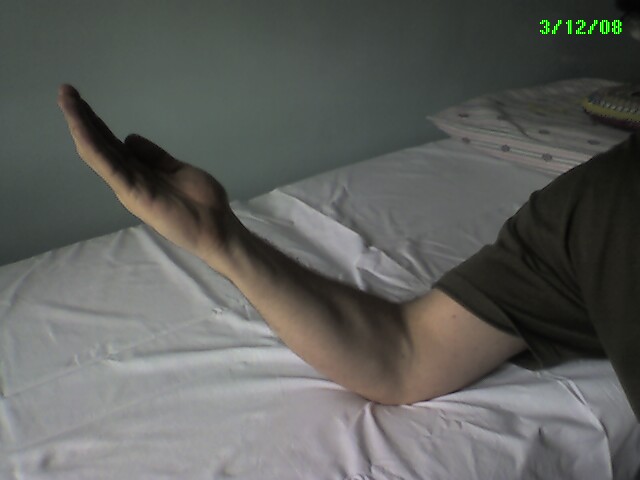
Pincer Hand
The pincer hand is a specialized technique that is used in the case of TPs in thin and flexible muscles. The pincer hand is essential in the case of TPs the Sternocleidomastoid and Trapezius. The technique can also be used on the Biceps and Gastrocnemius of the calf of a small person. To apply the technique it is necessary to properly roll the muscle fibers between fingers and apply pressure in a pincer like manner when you locate the tense muscular bundle and the Trigger Point.
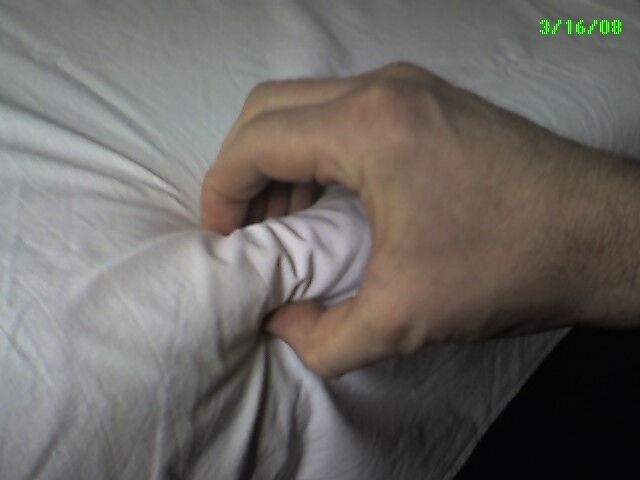
Exercises
For those who intend to practice Trigger Point therapy in a serious and professional manner, it is essential to strengthen the fingers. A good exercise is to do pushups on the five fingers. Another specific exercise is that of push-ups on the first two phalanges of the index and middle fingers, which exercise greatly helps to use the phalanges technique presented above . Finally, you can squeeze a tennis ball to strengthen one by one all of the fingers.
